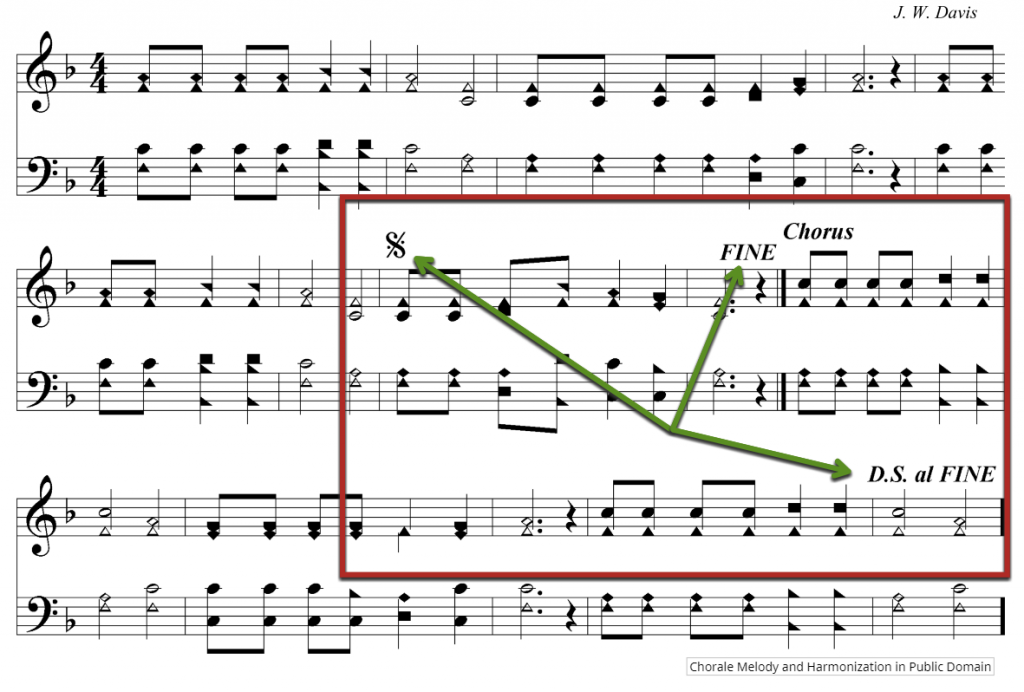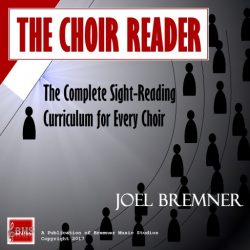Differentiated Learning
As teachers, we want every student to be challenged at his/her own level. “The Choir Reader” is consistent in its presentation of material making it possible for the individual student to grow progressively from level 1 to level 6 over several years and for each student to be challenged appropriately each lesson along the way. As you know, the more each individual advances, the more the ensemble progresses as a whole.







Rapid, Efficient Flow
"The Choir Reader" is set up to flow smoothly within and between the exercises each lesson. If you have all beginning readers, everyone will be level 1 or 2 and you will be spending about 5-7 minutes each time. As students advance, you will be adding more levels to this and it will slowly add time. If you have students of in all levels you should be able to do everything in about 15 minutes.
Clean Grading Period Structure
In a typical schedule for “The Choir Reader”, all students practice sight-reading in class three days per week (usually Monday, Wednesday, and Friday) and are quizzed individually each three weeks on their progress. This makes 9 total sight-reading days—8 lessons and 1 assessment—spanning the period of 3 weeks. Each level of “The Choir Reader” has 48 lessons (in 6 parts) and 6 assessments for each level.
An ideal schedule in an ideal world might look like this:
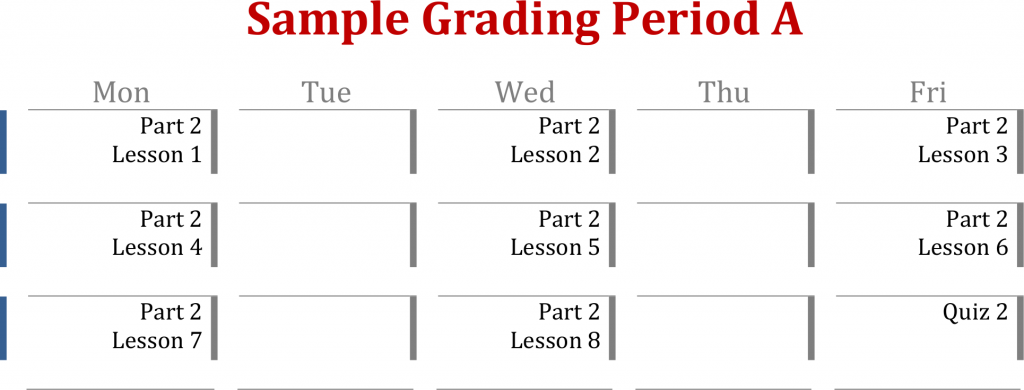
If there are days that are missed due to the school being scheduled to be closed just schedule over that day such as below:

Tracks Every Student's Progress
As you can see in the example below, you will have students in up to 6 levels at a time, but they will all be tracking together within their own levels. The red box indicates the current semester.
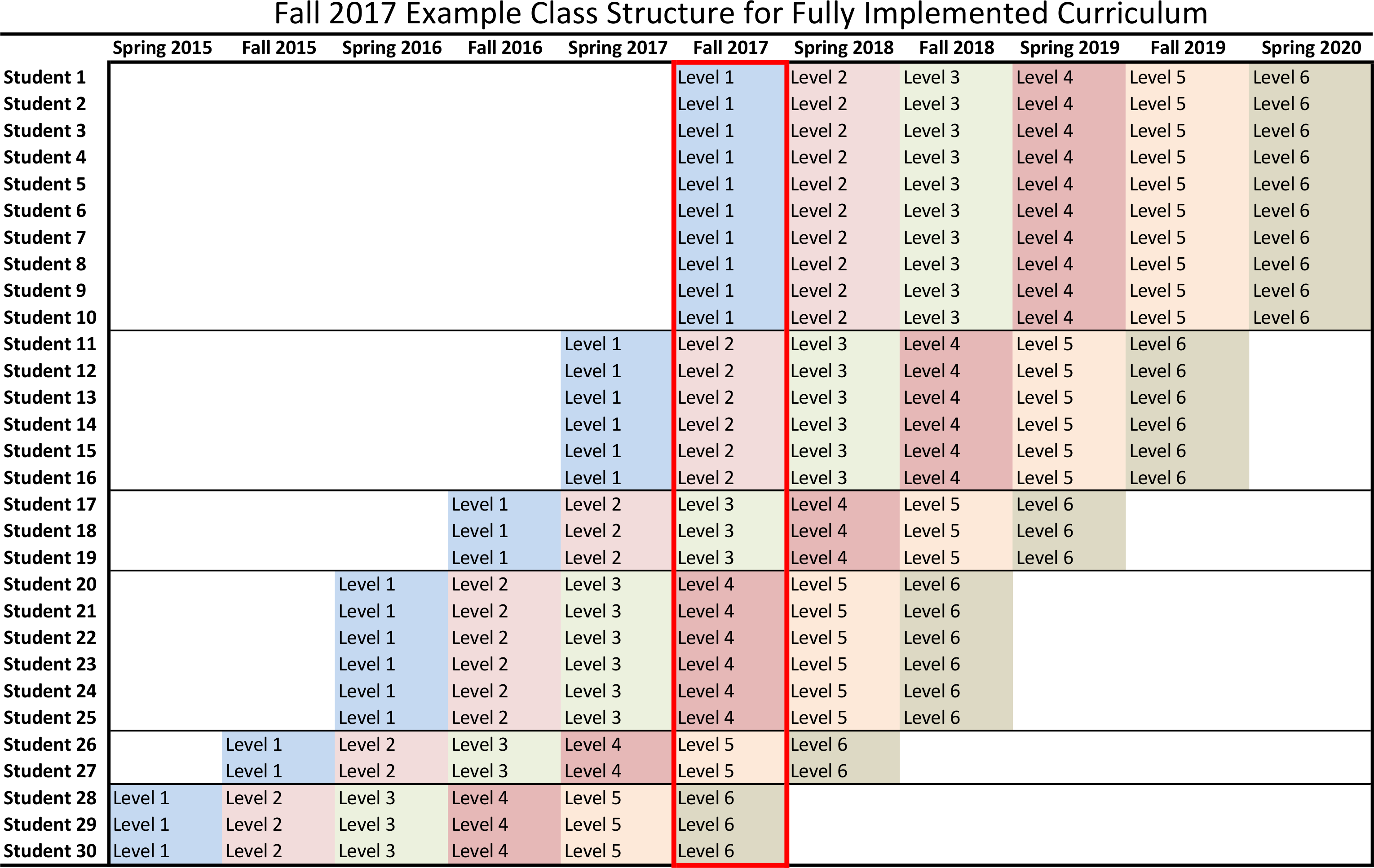
Throughout the year, students will be reading the examples in their level during each lesson. For example, students will be reading lesson 1 of their own level during lesson 1, students will be reading lesson 2 of their own level during lesson 2, etc. When it comes time to more formally assess student progress, they will be quizzed using the coordinating demonstration example for their level. For example, if it is the end of the first 3 weeks, they will be taking the quiz for Part 1 for their own level (there are separate quizzes for each level).

Though this may seem complicated, the flow is actually quite simple. If students are in level 1, they do and are responsible for the level 1 material. If students are in level 2, they do and are responsible for the level 2 material. And so forth. What results is everyone being challenged where they are at the same time.
Here’s how it works. All students in the class read the Level 1 examples and sing them together, all students who are in level 2 or higher read the level 2 examples, all students who are in level 3 or higher read the level 3 examples... and so on. Referring to the example above, students 1-30 will read level 1, students 11-30 will read level 2, students 17-30 will read level 3, students 20-30 will read level 4, students 26-30 will read level 5, and students 28-30 will read level 6. Students are encouraged to follow along with the examples in the levels more advanced than their own and to quietly attempt them for as long as they can.
Positive, Appropriate Assessments
What your assessments look like is a big determining factor in how the students generally will feel about the material. Also, what your assessments look and feel like communicates your priorities and purpose for teaching the material. "The Choir Reader" grading rubric outlines clear, attainable goals for both teacher and student. Assessment is part of the learning process, and can be done in a way that is non-threatening as well as truly directive and helpful.
Concepts Paced and Presented in Order
"The Choir Reader" assumes no previous experience for students and guides their practice until they can read in all major and minor keys and 13 time signatures. The exercises present concepts in a logical order that builds on what students have previously mastered.
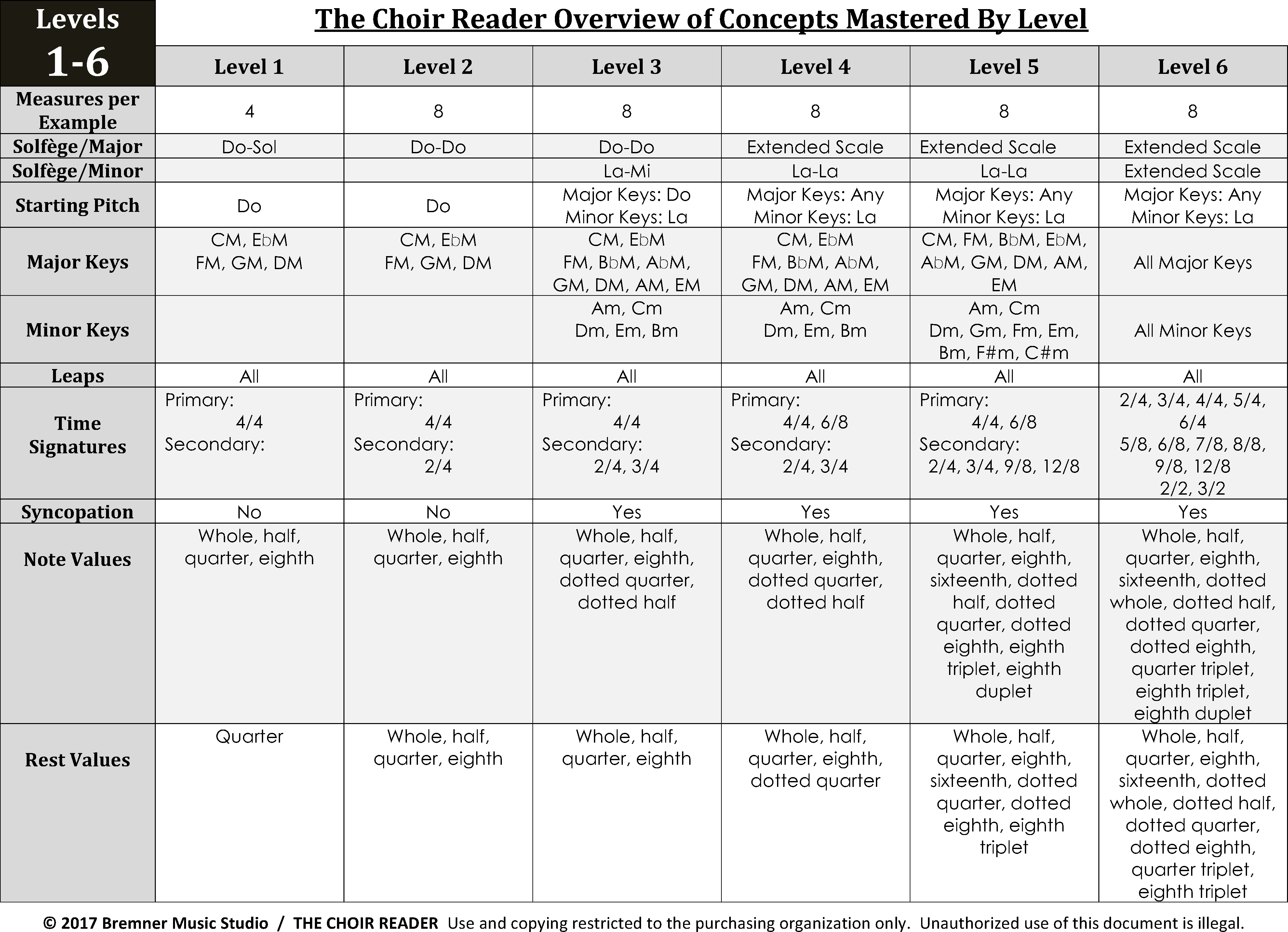
Accidentals and Directional Notation in Context
Accidentals are presented in the context of harmony.
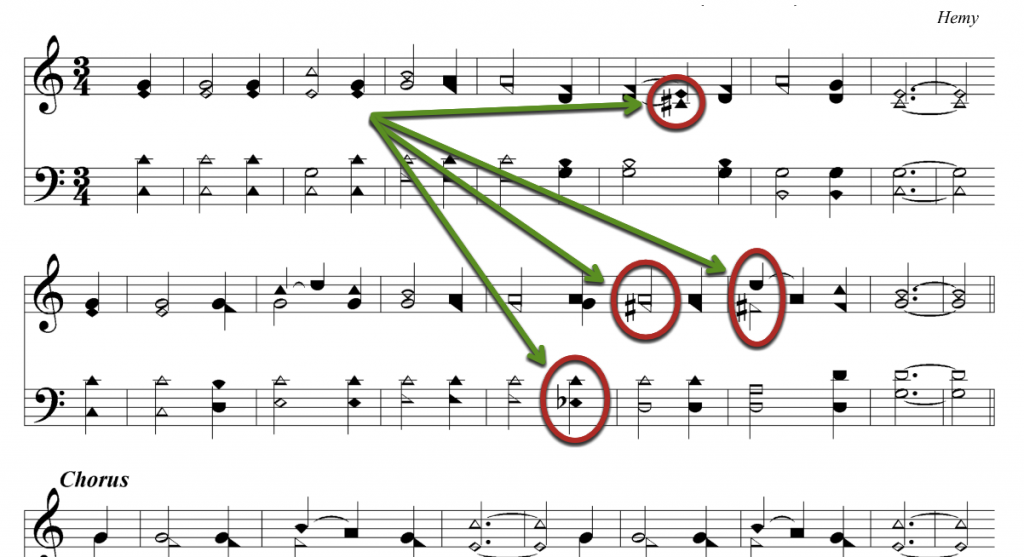
Directional notation (such as Repeat Signs, and Dal Segno, etc) is practiced in the chorales.
